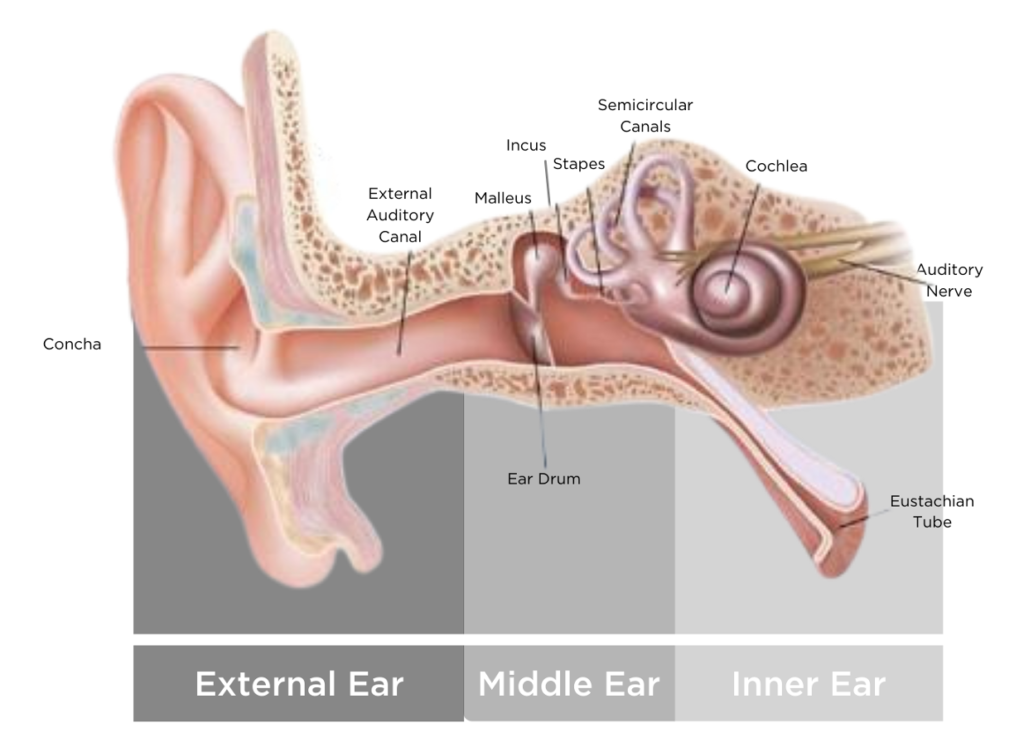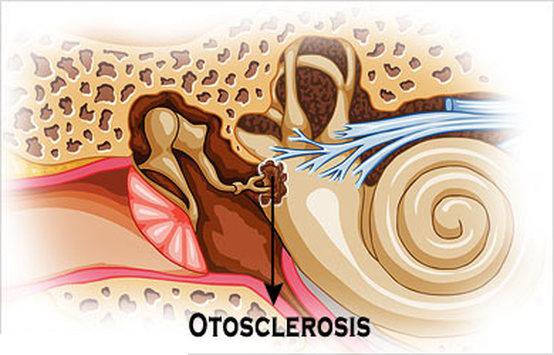Otosclerosis is an auditory pathology caused by the abnormal growth of one bone in the middle ear, leading to hearing loss and tinnitus. Learn the characteristics of this ailment:
Causes and symptoms of otosclerosis
Otosclerosis, from the greek words “otós” (ear) and “skerós” (hardening), is characterised by the abnormal growth of one bone in the middle ear that usually fix the stapes and prevents the chain of bones movement. This remodelled anomalous disrupt the sound capacity to vibrate the stapes, making that the sound cannot travel through the chain of bones in order the brain could interpret this vibrations and allows the hearing. Patients report progressive hearing loss, accompanied by tinnitus.

In the majority of cases, occurs conductive hearing loss, which starts in one ear and may end in the other ear. However, in advanced stages, it may also lead to mixed hearing loss or perceptive deafness.
Otosclerosis is a genetic pathology that affects to 1% of the population and it occurs more often in women, nearly double the incidence. It is widely believed that most of the cases are inherited, but this disease can also be related to a previous infection by Measles, with fractures in the tissue surrounding the bones of the inner ear caused by stress, or immune system disorders.
Otosclerosis and tinnitus
Despite the fact that hearing loss is the most common, tinnitus is also a symptom related to otosclerosis. Tinnitus is characterised by a wheezing or a constant beep that does not come from an external source.
As we have already mentioned in other occasions, tinnitus has neither cure nor medication that could actually remedy it, although there are treatments as Tinnitus Retraining Therapy that manage to mitigate its effects and restore the quality of life.
Diagnosis and treatments of Otosclerosis
The hearing health care specialist is in charge of diagnosing this disorder. First of all, the otolaryngologist or the audiologist will rule out other pathologies or health problems. Hearing sensitivity will be assessed using an audiometry and sound conduction in the middle ear is measured with a tympanometry. Moreover, with diagnostic images like computed tomography otosclerosis will be identified.

As it is a progressive hearing loss, the person could make use of a hearing aid in order to amplify the sound during the early stages of Otosclerosis.
After some time, it may be necessary to carry out a relatively simple surgical operation. There are two methods: stapedotomy, where a part of the stapes grown in an abnormal way is removed and an implant is inserted. Or stapedotomy, where the stapes is removed completely and it has been replaced with prosthesis. By means of these procedures the patient will be able to restore hearing and in many cases improve vertigo and tinnitus symptoms.
Have you ever suffered from otosclerosis? Tell us about your experience, we read you in comments.

Leave a Reply